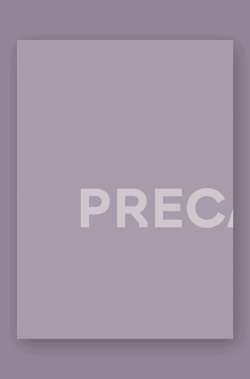Barbie’s new clothes
May 27, 2008

Article written by Xavier González
Blue eyes or brown, blonde hair or black, fair or dark skin –the details of the famous doll change to facilitate local identification for kids. But beyond the slight differences, Barbie’s body doesn’t change: the matrix stays the same. And if her vital statistics recall (in miniature, metric) those of Naomi Campbell (86-58-81) or Claudia Schiffer (96-62-92), before anything else her body represents a model: the universal sublimation of the standard young woman and her charms.
What is more, over and above her global body, the doll is really just a support for clothes; dressing her up entails casting her for a new role in a place, a climate or an event.
Shari, swim suit, sportswear or evening gown… Barbie’s clothes are like the skin of domestic architecture, a wardrobe to dress up an idealized typology and standardized functions. Each piece adds its note to the exterior, creating an atmosphere, a fantasy world, a scenography or a décor to support a story-line.
Standard human/standard house
Still in trauma, what with the urban and architectural wastelands created by mass-produced housing, New-Human n° 2 is bound to prefer difference to uniformity, meaning ‘the truth of what is specific… [since] the post-modern sensitivity perceives one fashion as being worth another, the patchwork of fashions signifying the effacement of modernity understood as the term of an evolution linked to progress’ (1) Today, the quest for diversity cuts across design, fashion and architecture, making no disctinctions. Fashion has reacted by inventing the ‘worn n’torn’ look and customized details as means of differentiation: you take a standard off-the-rack garment and transform it, either by a direct intervention on the fabric (artificial ageing) or by the collage of various details. This process means that standard products can be turned into one-off pieces simply by integrating what is flawed or random.
Architects today are faced with a similar situation, and they are also confronted with a paradox: on one hand they have to respond to an increasing demand for diversification and the desire for difference, on the other there is the imperative of integrating a long list of norms, regulations and constraints to the project, even if the latter inhibit typological evolution.
The process of formating dwellings is well under way, the generalizing of European Union construction norms, for instance, gives us a fairly clear picture of the state of things to come. But today the question of standardization isn’t just about the envelope, as it was in the 60’s.
The big issue now hinges on the typological models of habitat and the normative rules –more numerous every day– that govern them. In fact, these things are the new components of construction: floor-space, equipment, building norms, heat control, sound-proofing, security, accessibility for handicapped people, typological models…
Standardization of floor-space
The surface area of flats varies according to category, averages being 25 m2 for one-roomers, 42 m2 for two-rooms, 61 m2 for three-rooms, 73 m2 for four-rooms and 88 m2 for five-rooms. These figures have not changed in the past twenty years, even though dwellings now have to integrate within their limits constraints linked to new norms of accessibility for handicapped people.
The application of these regulations has caused the model to crystallize and has accelerated the standardization of component spaces. The living room averages 19 m2, the kitchen 7.5 m2 (3.60 x 2.10 m) and must contain six elements measuring 0.60 x 0.60 m (also normalized) with a minimum space of 1.5 m between each element. The main bedroom (2.80 x 3.80 m) must be accessible to a person with reduced mobility, the other bedrooms vary between 9 m2 minimum and 10 m2. The bathroom bloc (2.30 x 1.70 m) is constituted by adding together the turning space required for a wheel chair (1.50 m) and the width of the bath-tub (0.70 m); the length of sanitary fittings (1.70 m) governs the width of the bathroom. Circulation areas vary in width from 0.90 m to 1.20 m.
The rigidity of the model is often further accentuated by local construction methods. Some countries, like Holland or France, still use the tunnel formwork system; walls laid out on a 5.40 m or 5.60 m grid define both the load-bearing frame and the matrix for the dwelling’s internal partitioning.
Standardization of non-structural components
For obvious reasons linked to production imperatives, and in order to respond all the better to the homogenization of EU regulations, building firms have also standardized most nonstructural industrial products and components: electrical equipment, kitchen furniture (refrigerators, sinks, cupboards, the module being 0.60 m), sanitary fittings, tiling, partitions and doors, including their colour with the advent of the RAL matching system. ‘The homogenization of needs and consumer habits is one of the main trends that characterizes the new international environment of firms…’ (2) These few examples may seem to be of secondary importance but in fact they are part and parcel of a general movement and contribute to fixing the dimensions of rooms. A recent opinion poll on housing revealed one amusing detail: some people criticized architects for making kitchens too small and using doors whose dimensions made it almost impossible to install a twin-door American-style fridge, an object of differentiation and fantasy...
Standardization of functions
In the 1970’s, a broad-base survey dealing with housing and main functions was conducted by a group of sociologists. The results determined the profile of typical family homes and identified diagrams of spatial organization that became known as ‘cultural models of habitat’ (3) Interior layout was determined by a set of complementary spatial concepts: outside/inside, shared /private space, revealed/hidden, day/night, clean/dirty, front (street)/ rear (garden), dry/wet… This share-out gave rise to an ‘ideal’ functional matrix that purported to contain all the points put forward by the people surveyed. It became a compulsory model and its application was sanctioned by a ‘quality’ label the obtention of which, in the case of social housing, facilitated the financing of the project. Its directives were included in the general specifications that the developer handed over to the architect as of their first meeting.
‘These pre-established solutions paralysed all evolution. They tended to constitute models that were used time and again from one operation to another. This caused a break between habitat and life-style : the one remaining in its regulation strait jacket while the other evolved. Needless to say, these models are not part of the legislative apparatus, they are only dictated by it’ (4) Faced with this new state of affairs, architects looked on without reacting as a gradual shift took place from standardization of the outside to standardization of the inside, from the visible (facade) to the non- visible (private space). This drift contributed to the overall standardization of housing in Europe, with the gradual effacement of local particularities and, ultimately, the abandoning of research into applied typology.
Only a handful of architects of international renown, backed by ‘enlightened’ clients, were able to steer clear of this dead-end: ‘At the present time we’re building obsolete products that no longer correspond to the life styles or aspirations of most people… It was important for me to open a window. Némausus and Saint-Ouen don’t pretend to be models –they loosen up a blocked situation’ (5) When they look at the projects that Jean Nouvel mentions in this quote, which have been abundantly published in magazines, or at other exceptional housing projects, ‘standard architects’ start dreaming. And who wouldn’t looking at Galliano’s latest show for Dior?. By choosing from the collection a detail, a material, a colour or an accessory, people get the impression that they are in some small way part of the show, that they are moving with the trend.
When she dresses up her doll, the little girl is dreaming too, identifying herself by proxy with this idealized body and with these clothes that tell stories –in some small way she and Barbie are one.
From standard dwelling to free envelope
To compensate for the uniformization of the ‘body’ of habitat and respond to desires for difference expressed by future buyers, weary architects have little by little abandoned experimentation in living space to concentrate on envelope and appearance. They vary supply in formal terms, playing on different materials and styles in the same way as ready-to-wear clothes makers react swiftly to fashion trends.
This phenomenon leads in turn to the end of coherence, with a gradual dislocation of thought, typology and morphology within the process of elaborating the architectural project. The facade becomes a mere envelope, and architects –like fashion stylists– work on interchangeable pieces destined to dress the standard bodies of habitat.
No doubt it is in certain projects by MVRDV that the concept of ‘dressing’ appears most clearly in an explicit and assumed way. The exemple of their housing project at Ypenburg is a perfect illustration of the will to standardize the typological and social body. The uniformity that results from formal reduction and repetition is compensated by a wealth of materials, assemblages and colours that valorize difference and flatter identity.
Their buildings at Unterföhring reflect the same approach, but instead of housing the programme is a ‘park’ of offices. The repetition and implantation of volumes reduced to simple parallelipipeds reminds us of Ypenburg, but Unterföhring is a veritable fashion parade. The spirit of both projects, however, is that of a collection, with dominant theme and stylistic variations: archetypes of the block of flats and the office block.
These examples show how the concept of ‘dressing’ can be developed with talent, cynicism and even fantasy. But MVRDV have proven with brio, notably in their patio houses at Ypenburg or their silo building, that research into typology for habitat still holds a rich vein of interest and constitutes an important pole of investigation. Their manner is to develop it in its most playful expression, sometimes even to the absurd.
In a contrary manner, the approach adopted by Edouard François reveals the schizophrenic situation facing most architects. In his ‘building that grows’ or his ‘feathered building’, he uses plant-life as both a garment material and a vector of poetics. In the first project, the facade is constituted of an envelope of stone gabions laid as a potential support for plant-life; in the second, the facade is formed by a peripheral ‘crown’ of planters filled with white bamboo.
Both examples demonstrate research and experimentation using the new materials of nature as components of architecture. But experimentation is entirely turned towards the ‘dressing up’ of the dwelling, the typology of which is reduced to the simple repetition of a standard model. It is as if a tacit agreement obtained between developer and architect, whereby the production processes of habitat are shared out: hidden interior controlled by the developer, visible exterior considered as a ‘label’ support– for the architect. Communication hype does the rest, with real estate develoments baptised ‘Résidence des Arts’, ‘Les Portes du Parc’, ‘Résidence de l’Océan’, ‘Le Factory’, the ‘feathered building’ or the ‘building that grows’.
Architecture has lost the sense of its social ambition and is concerned with little more than décor, a wardrobe, a marketing product designed with clearly identified commercial targets in mind.
Strip-finish concrete, U-frame mindows, rusty metal, zinc, channel glass polycarbonate, bakelite-finish wood, screen printing, gabions, brickwork, colours… folds, liquid or blob forms, green facades, Swiss or Dutch touch, fractal or low tech… architects are out there sniffing for the latest trends. Minimalism is moving out… The production of the Netherlands is what fills the magazines. Herzog and de Meuron, Rem Koolhaas, Sejima-Prada, Christian de Portzemparc, Renzo Piano-Louis Vuitton, Frank Gehry-Issey Miyake, Gucci, Tadao Ando- Giorgio Armani –increasingly we see tandems that bring together architectural signatures and de luxe fashion labels. Venice, Orléans, Rotterdam are the catwalks, architecture reviews, like fashion magazines, relay the message, while the ‘ready-to-wear’ mass market hovers in the wings waiting to swoop on the new collections to snatch trends and accessories.
Is there anything left to invent?
An overview of architectural practise today gives rise to the following remarks: The architect has become a player like any other involved with a project, which is now defined in collaboration with other partners: associations, municipal architects, security or historic monument people, the fire department, engineers, construction firms….
The development of technological and digital tools is having an increasing influence on the unfolding of the project process.
A ‘glocal’ culture, ‘global/local’, is emerging, a hybrid born of the globalisation of exchanges of ideas and models as applied to specific places and local cultural exigencies.
All programmes carry a degree of randomness, which projects must integrate in their composition by offering a measure of flexibility, to respond to market trends; at the same time there is a need to diversify supply in terms of design to respond to desires for difference. computer will come up with a variety of assemblages, combinations and possible scenarios.
Article published in a+ t22. Density IV.
Notes
(1) Marc Augé: Non-lieux: Anthropologie de la surmodernité, Ed. Seuil 1992, p. 38
(2) Ibidem, p.12
(3) Henri Raymond: Paroles d’habitants, une méthode d’analyse, Ed. Harmattan
(4) Sociabilité et intimité des logements d’aujourd’hui. M. Eleb, A.M. Châtelet, Ed. Harmattan, p.44
(5) Ibidem, p. 45


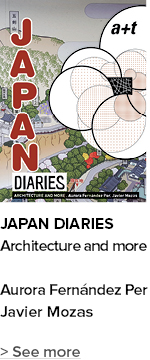
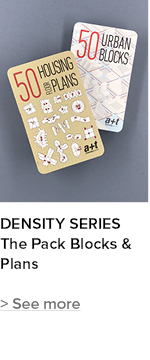

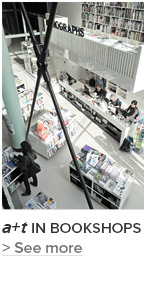
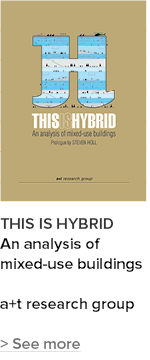


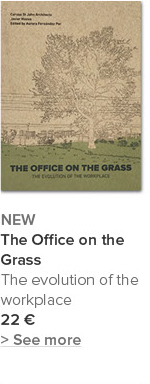

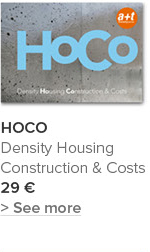
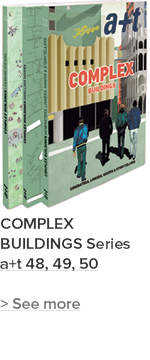

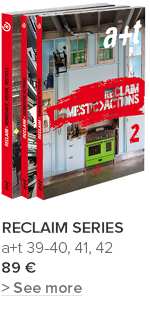
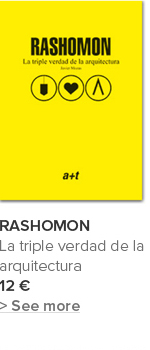
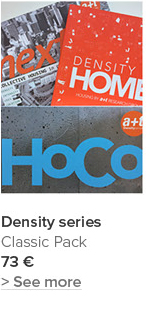





 I've read and agree to
I've read and agree to 


